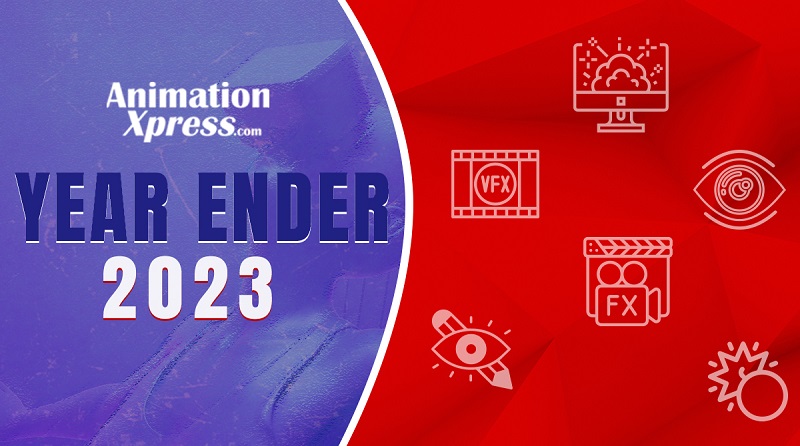In the wake of the monumental success of Baahubali, the Indian VFX industry experienced an unprecedented surge, propelling it into a phase of remarkable growth. Notably resilient during the lockdown, the industry reached new heights in 2022, captivating global audiences with blockbusters like Brahmastra: Part One – Shiva and RRR. This wave of success attracted the attention of global VFX powerhouses, with industry giants like ILM Mumbai and Pi Square Technologies making significant investments in the country, while existing players expanded their footprint.
Fueling this growth is the industry’s ability to deliver creative marvels, harnessing the power of cutting-edge technological advancements. Amidst the buzz surrounding these advancements, artificial intelligence (AI) has become a focal point, sparking both excitement and apprehension within the industry.
The advent of AI initially raised concerns, evoking fears of potential job losses. However, the industry has swiftly shifted its perspective, viewing AI not as a threat but as a powerful tool to be seamlessly integrated into the VFX pipeline. The primary objective is to leverage AI to achieve unparalleled speed and provide artists with the tools to satiate their creative hunger with enhanced precision.
As the Indian VFX studios embark on this transformative journey, the industry finds itself at the early stages of exploring AI applications. Workshops and training programs are underway to equip the workforce with the necessary skills, marking a nascent stage in understanding the profound effects AI could have on the industry.
In tandem with AI integration, the industry is also enhancing its existing technologies, such as real-time rendering and virtual production. In this article, we delve into the trends that shaped the Indian VFX industry in 2023.
Framestore India
“We see AI as a set of complementary tools that will make our artist colleagues’ jobs easier and help them excel creatively,” managing director of VFX and animation studio Framestore India Akhauri P Sinha told Animation Xpress. “Framestore is working to develop such tools using a bottom up approach, in the sense that artists themselves suggest what features and aspects of these tools would be the biggest aid in their work. There is currently a global team of artists and developers that includes Mumbai artists as well that are collaborating in the development of these tools.”
Technicolor India
Several technologies continue to dominate the VFX industry, shaping the way visual effects are created and integrated into films and other media. According to Technicolor India, virtual production techniques have gained prominence, enabling the seamless integration of physical and digital elements in real-time over the last 10 years. Real-time rendering technologies have advanced, providing the artists with instant visualisation of complex scenes and facilitating collaborative decision-making during production.
“We have utilised this technology, which paired with our in-house proprietary tools make production and collaboration with our global counterparts more aligned and in real-time. Additionally, machine learning and AI tools have started playing a significant role in upscaling, denoising, and automating aspects of the visual effects pipeline, enhancing overall efficiency,” Technicolor India shared.
They pointed out that in India, where many studios provide services for RPM, AI is poised to revolutionise workflows. AI’s potential impact spans from automating repetitive tasks to optimising data management, utilising predictive analytics, and enhancing visual quality through processes like upscaling and denoising.
“At Technicolor India, we are actively adapting to this changing landscape by exploring AI technologies into our future production stack. The Mill – our premier advertisement and experience brand, has been actively leveraging AI and Gen-AI tools and trends across various projects. An advert for Salesforce AI featuring Hollywood actor Matthew McConaughey, leveraged AI to explore a plethora of unique looks, ultimately producing truly groundbreaking visuals,” they added.
Talking about trends in visual effects, Technicolor mentioned that India does more than 75 per cent of the world’s Roto, and a significant amount Paint, Prep and MatchMove. The big trend witnessed was that the modelers are making India a coveted destination for 3D models across a plethora of industries, not just in 3D animation or visual effects, but also in edtech, fintech and everything that requires the creation of imagery. The other big trend that is noticeable is that as changes in technology take place, Indian artists and technicians are adept at embracing new computer graphics methodologies.
Digikore Studios
Pune-based Digikore Studios started testing and partially using an AI Roto tool this year. They believe this will be a game changer for the industry.
“No one can fight technology and if we want to survive we have to learn to embrace technological advancements and use them to our advantage. At a studio level AI will help the smart studios improve productivity. But studios that completely rely on RPM as business may get impacted in the near future. Luckily Digikore delivers full shots and hence we will be able to use AI to our advantage,” said Digikore Studios founder and CEO Abhishek More.
More also spoke about virtual production being “a game changer in the film and episodic industry”. They forayed into virtual production over 18 months ago. “We are foreseeing a substantial portion of our revenue coming from virtual production in the years to come. We are creating a disruptive tool in virtual production.”
FutureWorks
FutureWorks also looks at AI as another tool and they think it will enhance an artists capability making them more efficient and not replace them. “Currently we are using AI for visual ideation, data analysis and coding. Nuke’s Copy Cat is interesting and we have been using it occasionally,” said FutureWorks CEO Gaurav Gupta.
RedChillies.vfx
RedChillies.vfx, highlighted that technologies like virtual production, AR/XR, game engines like Unreal Engine emerged as a dominant technology in the VFX industry in 2023, widely utilised for storyboarding, pre & post-production, and creating diverse environments. Similar to other studios, they also worked with Unreal Engine to streamline the production pipeline.
“While AI is another technology that is evolving, it has not yet reached a stage where it can be seamlessly integrated into our pipeline. It’s a technology on the horizon, used occasionally for referencing, and though promising, it will likely take a few years to mature into a tool that significantly aids the VFX process,” they pointed out.
88 Pictures
88 Pictures, a well-known name in the animation industry, has taken a major developmental step of venturing into VFX after just seven years of coming into existence. Having worked on multiple award-winning animation projects, the studio’s first VFX project was the Bollywood movie Mission Majnu starring Siddharth Malhotra. The film was released in January 2023.
According to 88 Pictures founder & CEO Milind D. Shinde, in the intricate dance between technology and creativity, the impact of AI remains elusive, leaving industry experts in a contemplative state. Shinde foresees a formidable challenge to traditional, stereotypical work processes.
He explains his point with an example. For instance, there’s a project of decent or low quality spanning a staggering 1000 episodes. Shinde elucidates that by feeding a mere 100 episodes into an AI program, the machine can adeptly complete the task. This projection signals a potential disruption in the lower value chain of the business, potentially rendering it obsolete. Consequently, Shinde emphasises the urgent need for a paradigm shift in the current business model, foreseeing its inefficacy within the next five years.
The transformative potential of AI extends beyond mere automation; it becomes a catalyst for generating insightful research points for content creation. Here, the symbiotic relationship between AI and Machine Learning (ML) takes center stage, facilitating a deeper understanding and analysis of data. The result is not just streamlined workflows but the creation of superior content, a cornerstone for improving efficiency and productivity in the industry.
Shinde delves into the evolution of content consumption, foreseeing a departure from traditional linear narratives. “The impending wave of gamification of content, fueled by AI, ML, and technologies like Unreal Engine, represents a seismic shift. In this new era, viewers transition from passive observers controlled by a monitor to active participants wielding a remote.” Shinde envisions a future where immersive content, metaverse experiences, and diverse forms of entertainment seamlessly converge, driving the industry towards unprecedented horizons.
philmCGI
In 2023, philmCGI offered a visual treat in various films and series like The Archies and Kaala Paani on Netflix and Amazon Prime’s show Jubilee by Vikramaditya Motwane.
The studio was actively involved with Jubilee after its scripting process. philmCGI founder and MD Anand Bhanushali shared that they made extensive use of technology as it was shot during the pandemic. Three fictional places in the series – Lucknow Street, Mumbai Street and Royal Talkies, have fully been created using CG. The VFX studio expanded the place further by using the method of set extension. For the period drama, philmCGI has for the most part used the traditional 3D method of VFX, wherein the assets on the shoot location are extended using visual effects. For car scenes in particular, they used virtual production. As the story demands a city of the 1950s, the VFX team had to create the CG roads depicting that era.
Talking about AI and its impact, Bhanushali said, “I think AI is more of a tool for us which is helping us to do the work faster and in a more automated way.” He also thinks it is increasing the productivity of the artists and augmenting the workflows, making it faster and better. The lower end work which is more laborious, is getting automated but that doesn’t mean those staffs will be removed. It is just that it will enable the studios to do much more work with the same capacity of people.
Each studio offers a unique insight into the evolving landscape of VFX, with a shared acknowledgment of AI’s potential to reshape content creation, enhance productivity, and drive the industry toward immersive experiences. As the Indian VFX industry ventures into uncharted territories, the fusion of creativity and cutting-edge technology paves the way for a future where innovation knows no bounds. The collaboration between artists and AI signals a new era, poised to redefine storytelling and entertainment in unprecedented ways.



